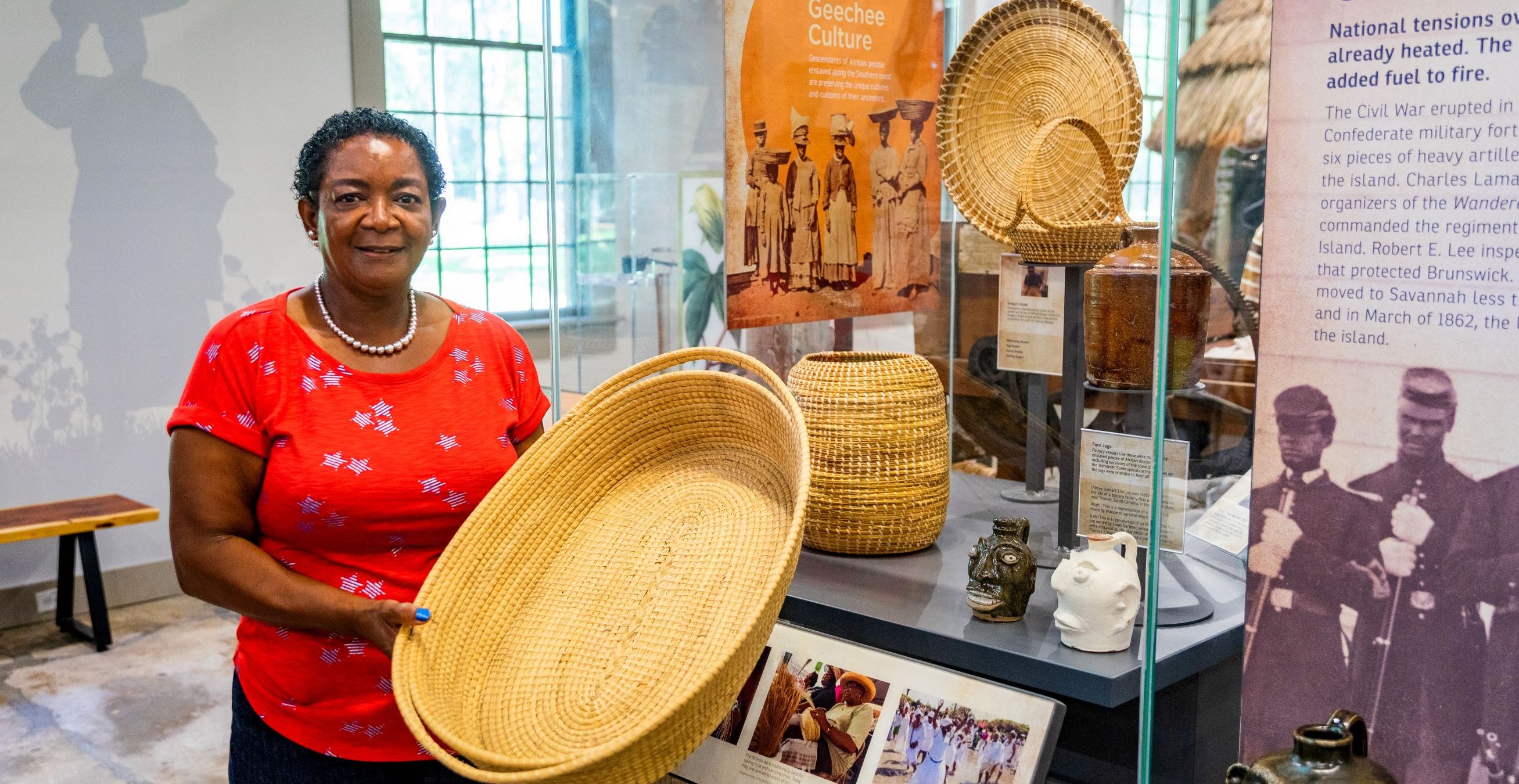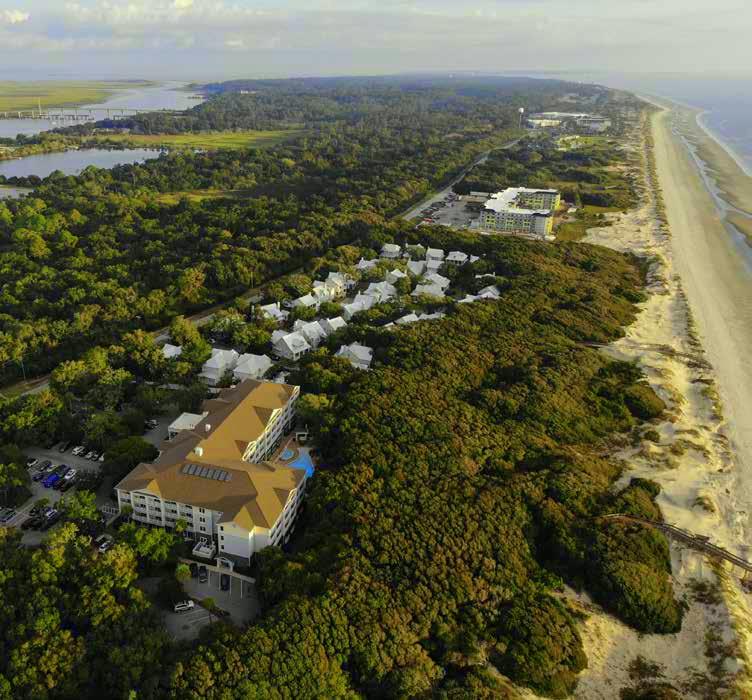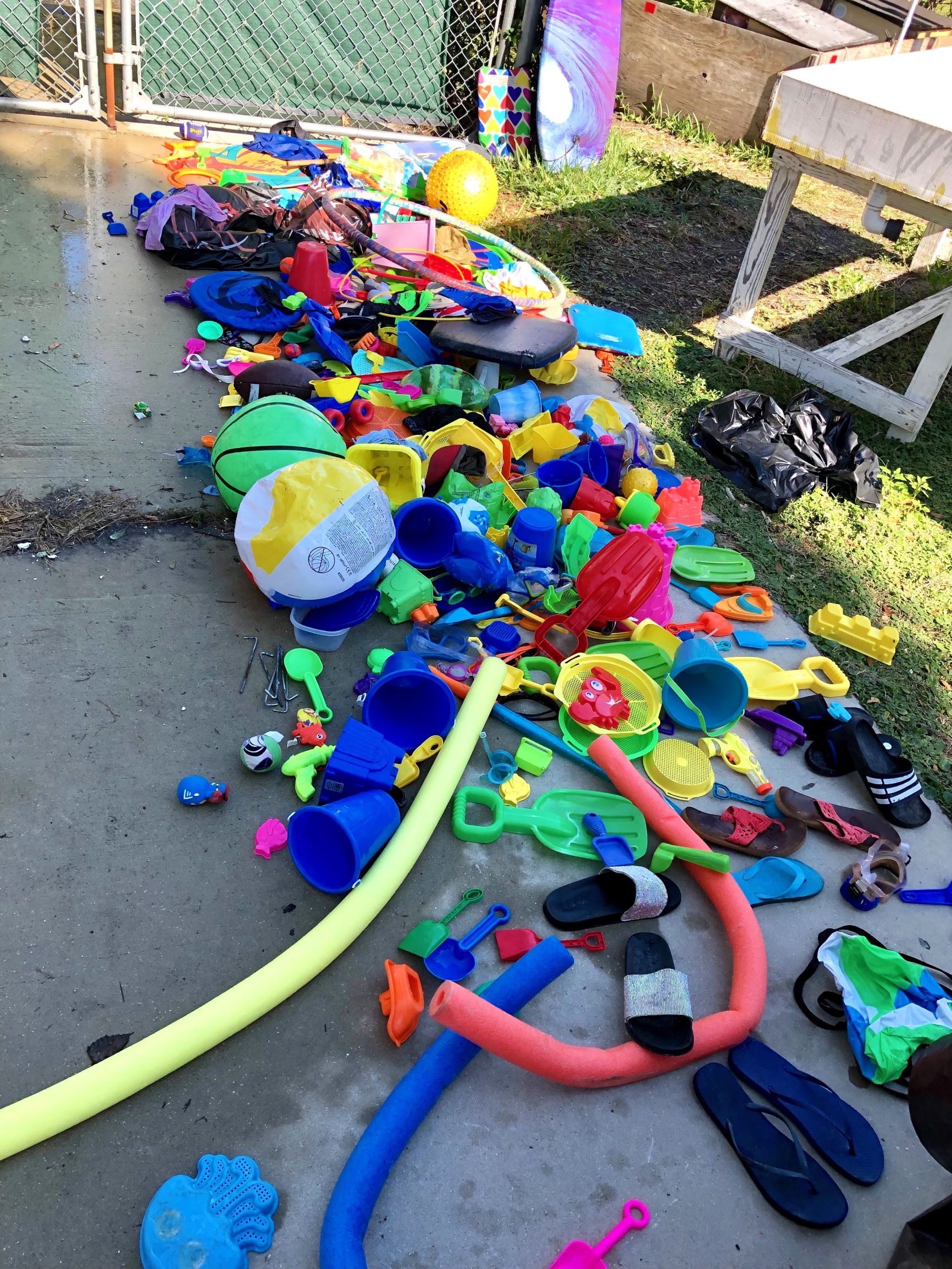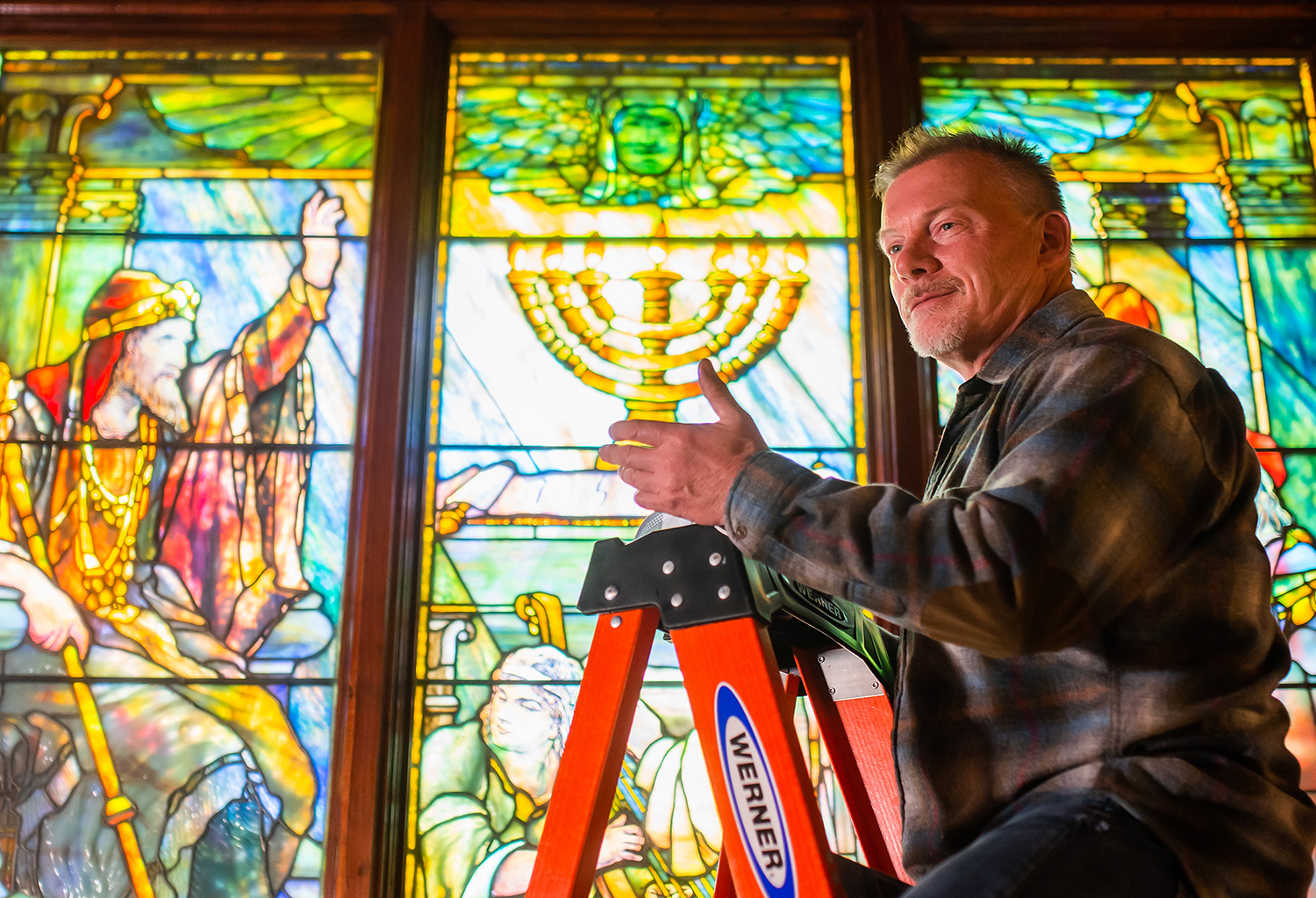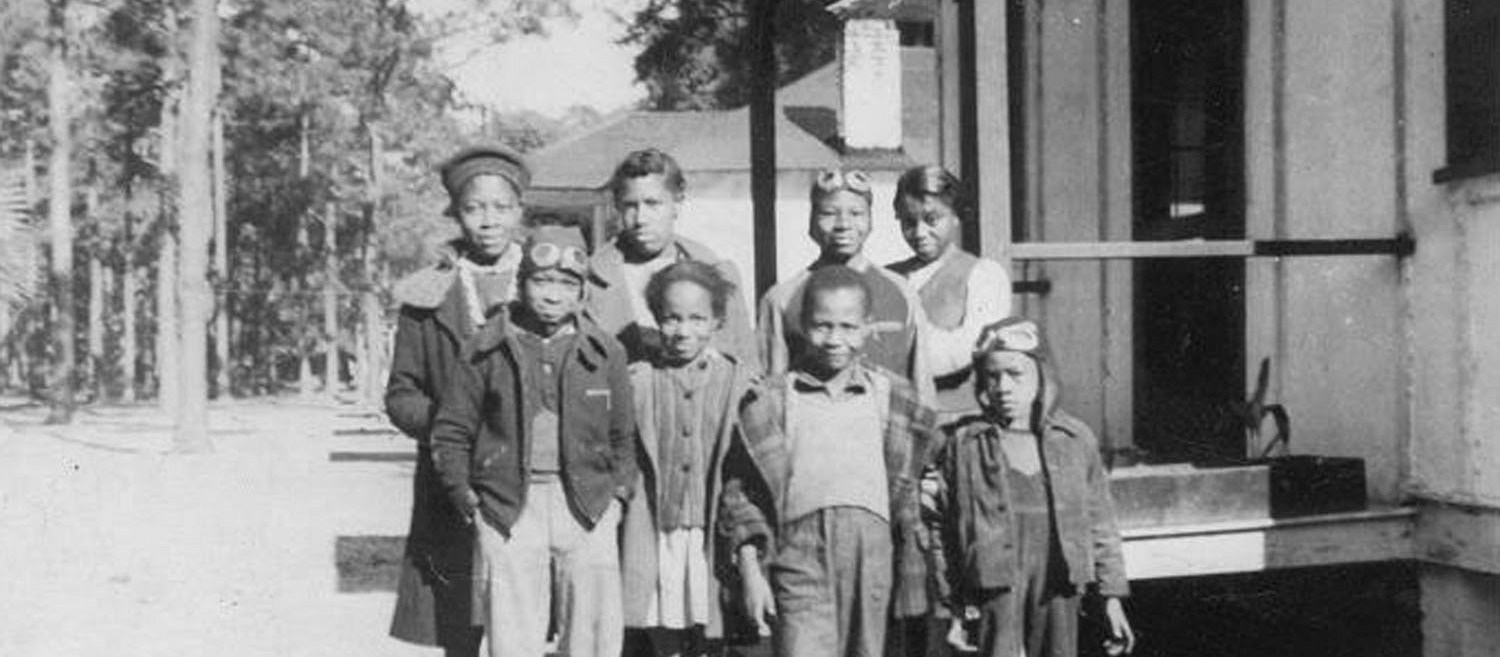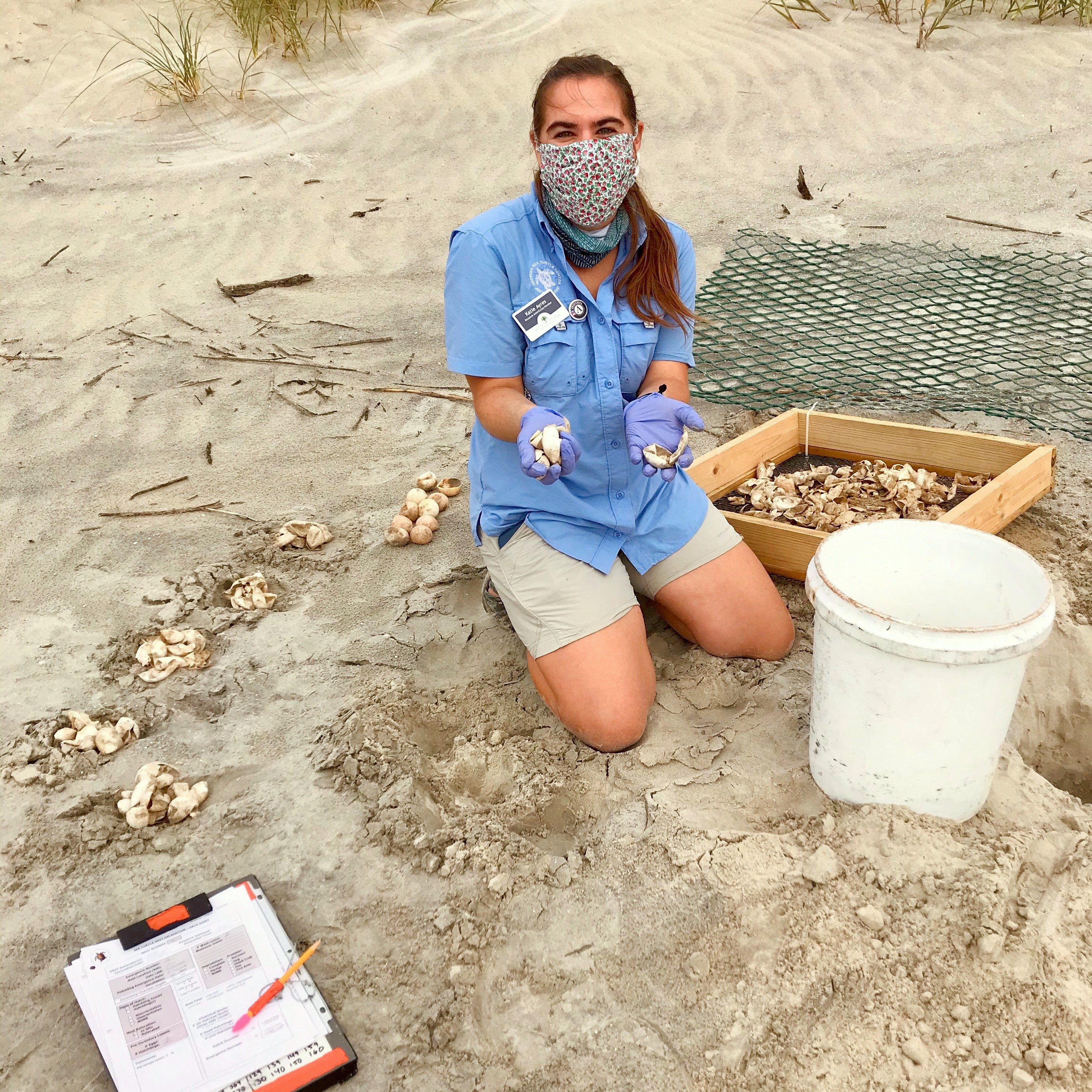By Andrea Marroquin, JIA Museum Curator
The Gullah Geechee culture can be found along the Southeastern coast of South Carolina, Georgia, North Carolina, and Florida. The name Gullah Geechee comes from the African-based, creole language of the community, composed of a combination of West African, English, French and Portuguese languages. Gullah typically refers to the islanders located in South Carolina, while Geechee refers to those living along the coast of Georgia and Florida.
The ancestors of the Gullah Geechee people came to the United States as enslaved Africans, beginning in the 1700s. The enslaved men and women brought to this area from West Africa came from a variety of different nations, but they shared many similar cultural traditions. Together, they created a unique culture, blending their traditions with those of others, in order to adapt and survive in this new place.
Today, members of the Gullah Geechee community have maintained their ancestral practices and ways of life for more than 250 years. Griffin Lotson and Yvonne Grovner, like many before them, teach others about the Gulluh Geechee heritage in an effort to preserve these traditions for future generations.
Geechee Gullah Ring Shouters, heard here in an interview with Griffin Lotson, keep the “praise break” alive. This ritual or dance often took place during or after a Christian prayer meeting or worship service. Men and women would move counterclockwise in a circle, shuffling their feet, clapping, and often spontaneously singing or praying, including calls, cries, and shouts. It is still primarily practiced among Christians of West African descent.
Sweetgrass baskets were a traditional West African craft, also brought to America by enslaved Africans. Made using marsh grasses, sweetgrass baskets had many practical uses within day-to-day activities. The ancient tradition of basketmaking continues as one of the oldest art forms of African origin in America. Today, Yvonne Groover teaches sweetgrass basketmaking classes throughout the region. For more of Yvonne’s story and basketmaking classes, visit Master of the Craft. Sweetgrass baskets made by Gullah Geechee artisans can be found on exhibit at Mosaic, Jekyll Island Museum.
STAY TUNED! In our June Seasonal Island Series, we’ll take a look at the history of the Wanderer, as well as the new Wanderer Memory Trial, found on the south end of Jekyll Island.
Learn more about Black History on Jekyll Island.
